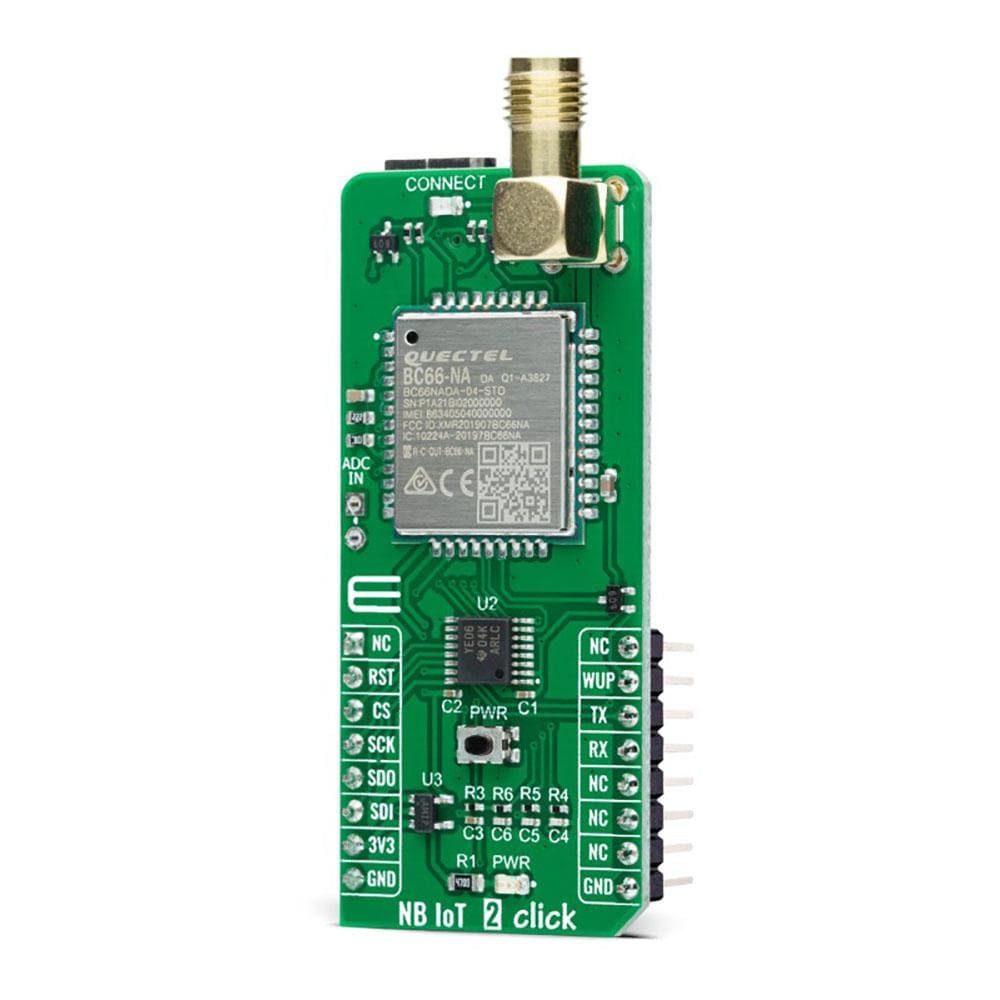
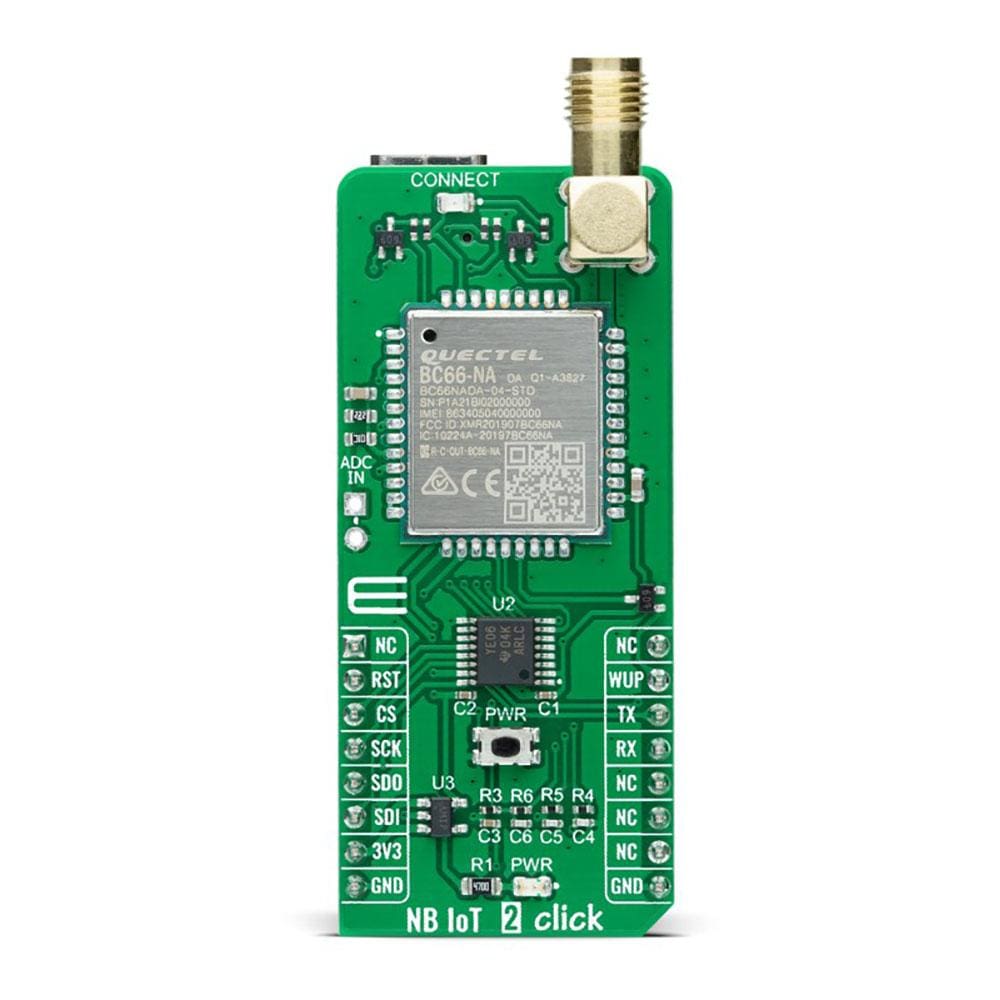
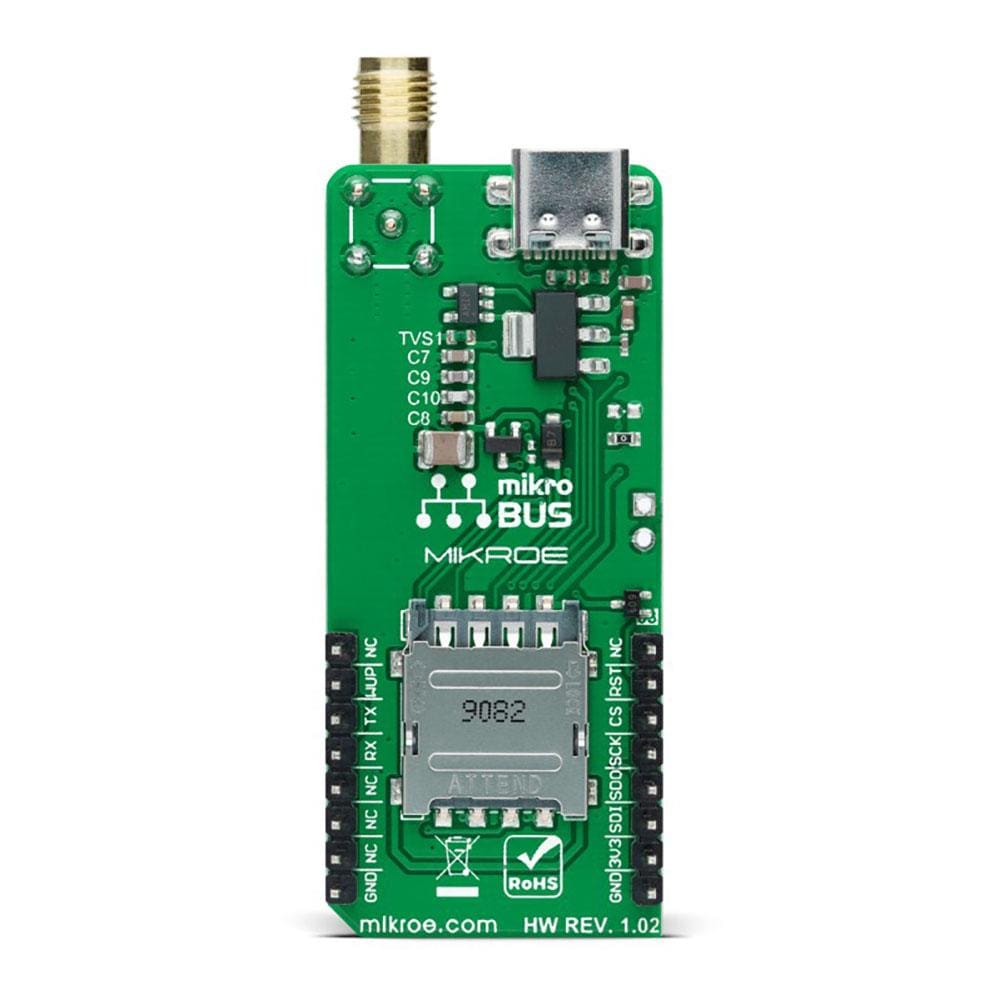
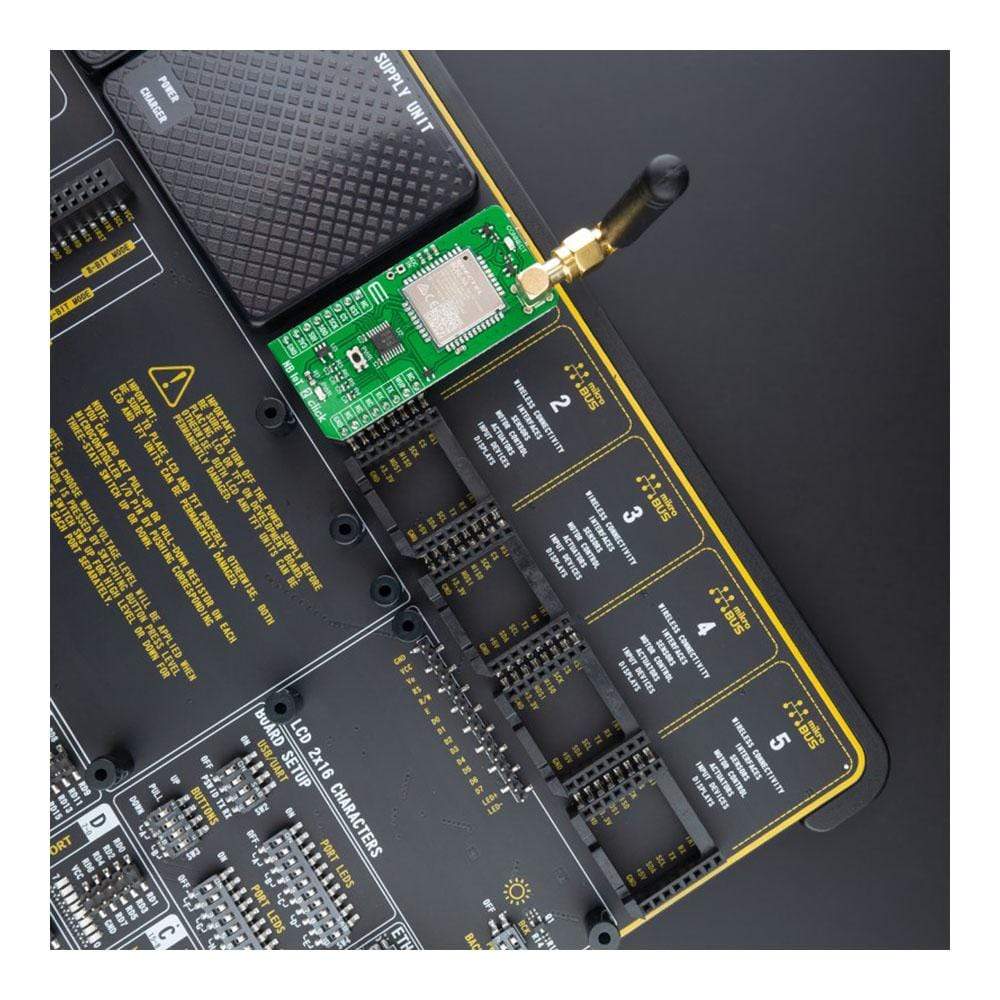
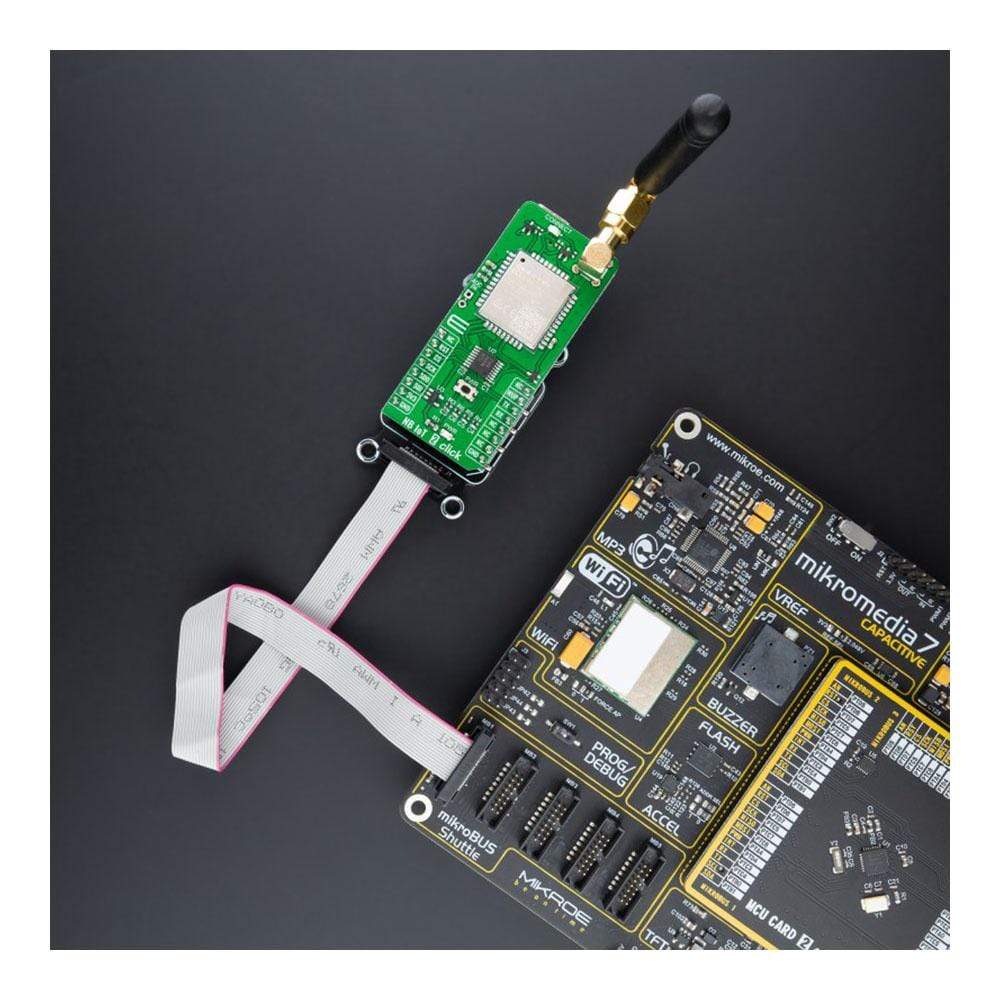
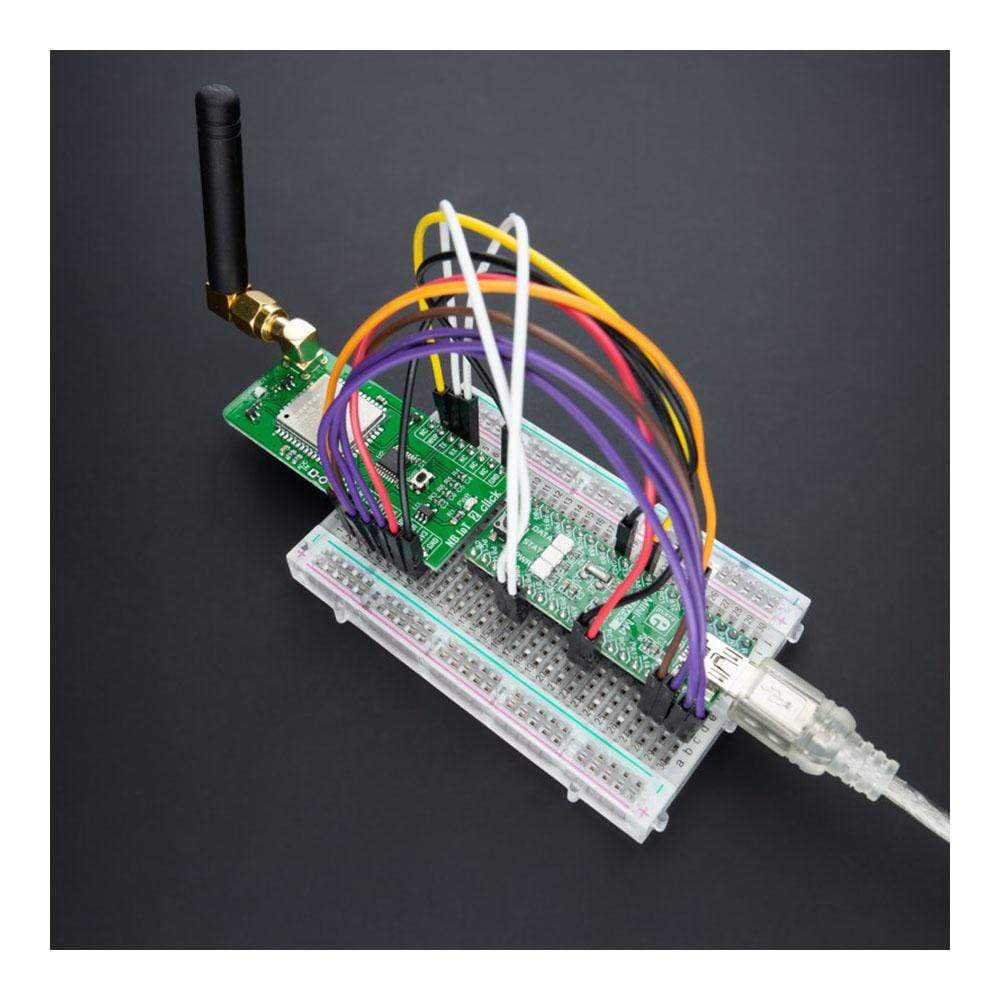
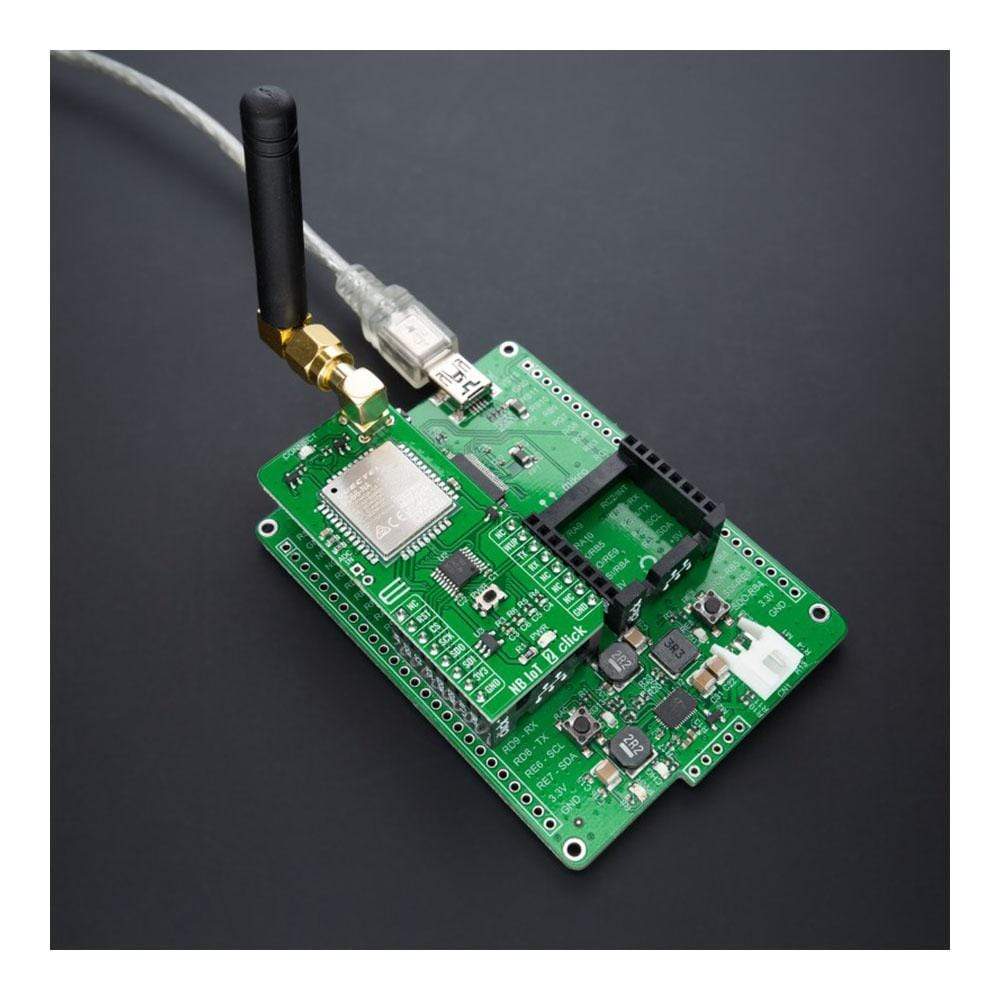
Overview
The NB IoT 2 Click Board™ is a compact add-on board that contains a compact LTE Cat NB2 module with ultra-low power consumption. This board features the BC66-NA, a high-performance, multi-band LTE Cat NB2 module with extremely low power consumption from Quectel Wireless Solutions. It provides a flexible and scalable platform for migrating from GSM/GPRS to the NB-IoT network and supports band 71 and band 85 to accommodate more operators. It also offers external interfaces, protocol stacks (providing great convenience for your applications), and a complete range of SMS and data transmission services to meet client-side demands. This Click Board™ is suitable for a wide range of IoT applications, such as smart metering, intelligent wearables, security and asset tracking, home appliances, environmental monitoring, and many more.
The NB IoT 2 Click is supported by a mikroSDK compliant library, which includes functions that simplify software development. This Click Board™ comes as a fully tested product, ready to be used on a system equipped with the mikroBUS™ socket.
Downloads
Le NB IoT 2 Click Board™ est une carte complémentaire compacte qui contient un module LTE Cat NB2 compact à très faible consommation d'énergie. Cette carte comprend le BC66-NA, un module LTE Cat NB2 multibande hautes performances à très faible consommation d'énergie de Quectel Wireless Solutions. Il fournit une plate-forme flexible et évolutive pour la migration du réseau GSM/GPRS vers le réseau NB-IoT et prend en charge les bandes 71 et 85 pour accueillir davantage d'opérateurs. Il offre également des interfaces externes, des piles de protocoles (offrant une grande commodité pour vos applications) et une gamme complète de services SMS et de transmission de données pour répondre aux demandes côté client. Ce Click Board™ convient à une large gamme d'applications IoT, telles que les compteurs intelligents, les vêtements intelligents, la sécurité et le suivi des actifs, les appareils électroménagers, la surveillance de l'environnement et bien d'autres encore.
Le NB IoT 2 Click est pris en charge par une bibliothèque compatible mikroSDK, qui comprend des fonctions qui simplifient le développement logiciel. Cette Click Board™ est un produit entièrement testé, prêt à être utilisé sur un système équipé du socket mikroBUS™.
| General Information | |
|---|---|
Part Number (SKU) |
MIKROE-4562
|
Manufacturer |
|
| Physical and Mechanical | |
Weight |
0.02 kg
|
| Other | |
Country of Origin |
|
HS Code Customs Tariff code
|
|
EAN |
8606027382475
|
Warranty |
|
Frequently Asked Questions
Have a Question?
Be the first to ask a question about this.







